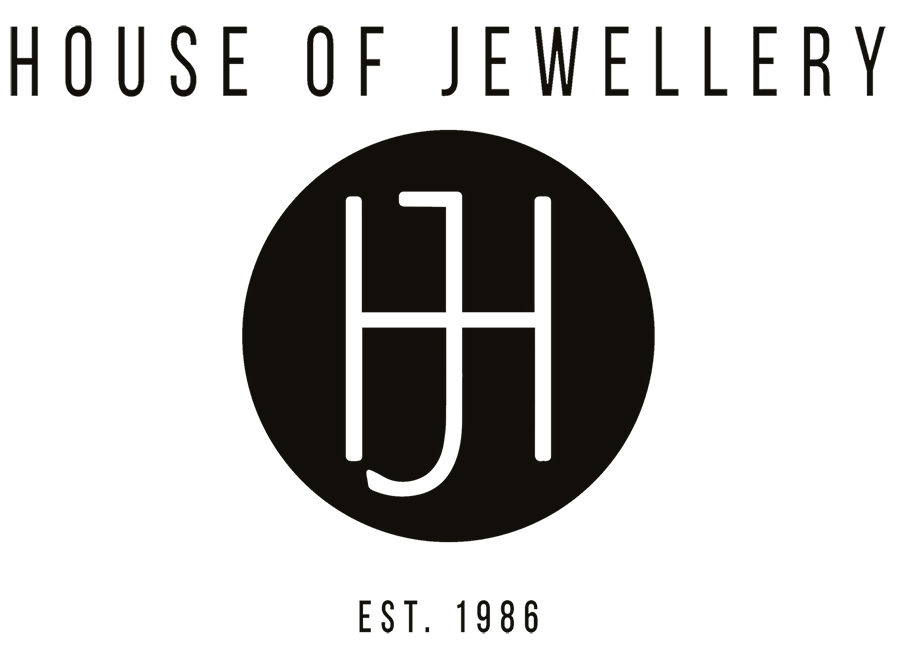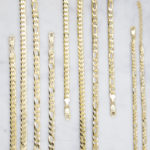Just as there is with anything else, there are jewellery myths and superstitions. While many of these are seen as old wives’ tales, they’re still fun to read about. From lucky charms to bad omens, we’ve covered a wide range of interesting beliefs people have had about jewellery.

Biting Gold to Determine its Authenticity
You’ve probably seen this in media, but biting into gold isn’t the best way to tell if it’s real. Remember, gold is very malleable or soft, and as a result, you may end up with teeth marks on your jewellery. The best way to tell if gold is real is to check the stamps, test it on clean skin, or take it to a reputable jeweller.
Sterling Silver Keeps Bad Spirits Away
It’s said that this precious metal keeps people safe from evil spirits – if that’s something you believe in. There are other methods of keeping ghouls away, such as bracelets made of red string, various gemstones, and symbolic medallions.

Lucky Charms
In the same vein, there are certain symbols, gemstones, and other jewellery that are said to enhance one’s luck. These include charms and pendants in the form of items already established to be lucky. These can include rabbit feet and four-leaf clovers, specific stones like citrine and agate, and other various items. These jewellery myths have been circulating for centuries, so maybe there is something to it? Who knows?

Sapphires Only Come in Blue
As we’ve mentioned before, sapphires come in a variety of colours. In fact, aside from some reds and pinks, they come in just about every colour in the rainbow!

Nothing Can Break a Diamond
Yes, diamonds are the strongest mineral in the world, but it doesn’t mean they’re indestructible. After all, they have to be cut in order to fit jewellery. Just because something is hard doesn’t mean it can withstand impact from a strong object. For example, a diamond can be shattered with a hammer. That should put the Mohs Scale into perspective for people thinking diamonds are indestructible.

Diamonds are the Rarest of all Gems
For whatever reason, many people believe that the diamond is the rarest gemstone of all – but that’s another one of those old jewellery myths. Everyone has or knows someone who has a diamond. They’re not as hard to come by when compared to other gemstones. Some of the rarest include painite, bixbyite, and garnierite.

Opals are Omens of Bad Luck
At one point in time, this beautiful gemstone was seen as a bad omen. People would walk out of shops that displayed opal items and go out of their way to prevent being near them. These days, opals have a different reputation and are worn in just about every style possible.
This idea originated with a novel published during the 1800s: Anne of Geierstien, written by Sir Walter Scott. In this book, there was a character who had an opal hairpiece that lost its lustre after being soaked with holy water. The character who owned the hairpiece died shortly after. While she didn’t actually die from the opal, this fact wasn’t revealed until the next installment of the story, causing many people to assume opal was a cursed gemstone.

Pearls and Their Various Myths
For a single gemstone, the list of jewellery myths is a long one:
- You should wear pearls often to help them keep their shine (true)
- Wearing pearls on your wedding day is bad (false)
- Wearing a pearl engagement ring is bad (false)
However, the most famous and well-known myth is that pearls can be dissolved in vinegar. The popular story of Cleopatra drinking a pearl to prove her worth to Marc Antony has been passed down for generations. Considering Pliny the Elder, a Roman philosopher at the time, said the pearl was fairly large and worth a good lump sum of money, it sounds like it may not have happened. However, according to NBC News, Prudence Jones of Montclair State University did his best to re-enact the famous scene. His findings? Pearls can be dissolved in vinegar, but for a pearl of that size to dissolve it would have taken at least a day.

The Claddagh Ring
The Claddagh ring has a romantic history behind it which ties into the way someone should wear the ring. This ties into the superstitions about the ring.
One is that each of the four different ways to wear a ring defines your romantic state:
- Left hand facing upright: Married
- Right hand facing upright: In a relationship
- Left hand upside down: Engaged
- Right hand upside down: Single
However, the myth we want to mention is the superstition that people should not buy themselves a Claddagh ring. Many people swear by this jewellery myth, but these days people are buying jewellery for themselves.

DIY Gender Reveal
Many people believe that determining the gender of a baby can be determined using a wedding ring. To do this, a pregnant woman should lay on her back and have her wedding ring dangled above her stomach by a string. If it swings side to side it’s a girl, but if it swings in a circle it’s a boy.
Of course, there’s no proof that this method works, but it’s always a fun activity for a gender reveal party.
The Engagement Ring Finger
Do you know why we wear our engagement rings on one specific finger? It’s believed that the ring finger on the left hand has a vein that traces straight to the heart (called the Vena Amoris meaning “vein of love”). When wearing an engagement ring on your ring finger, it then means you’re keeping your loved one close. While yes, the veins in that finger link to the heart, so do all the other veins in all your other fingers. However wrong this may be, it’s one of the more wholesome jewellery myths, so we can let it slide this time.

Wedding and Engagement Rings
Rings are a tricky subject in of themselves. Many people refuse to buy rings as gifts because of their romantic nature, but there are more superstitions to them than that:
- Don’t wear another person’s engagement ring
- Never let someone else wear your engagement ring
- Don’t wear a wedding ring before marriage
- Never wear someone else’s wedding ring before marriage
- Don’t let someone else wear your wedding ring
- Don’t lose an engagement ring or wedding ring
- Be cautious of wearing a second-hand wedding or engagement ring
Of course, losing an important ring is always bad news, but for the most part, many of these are said to cause problems in marriage. For example, rings are said to carry the emotions of the relationship it represents, so having a second-hand ring could influence the next one, or wearing someone else’s ring will jinx both the owner and wearer.

Cleaning Jewellery with Toothpaste
The rumour that toothpaste is a good jewellery cleaning solution has been going around for decades – but that doesn’t mean it’s right. Jewellery can be fragile and delicate, so it’s best not to use abrasive cleaners. Think about how water can tarnish the jewellery and other cleaners can damage it, then consider the chemicals used in toothpaste – it’s not a good idea.





